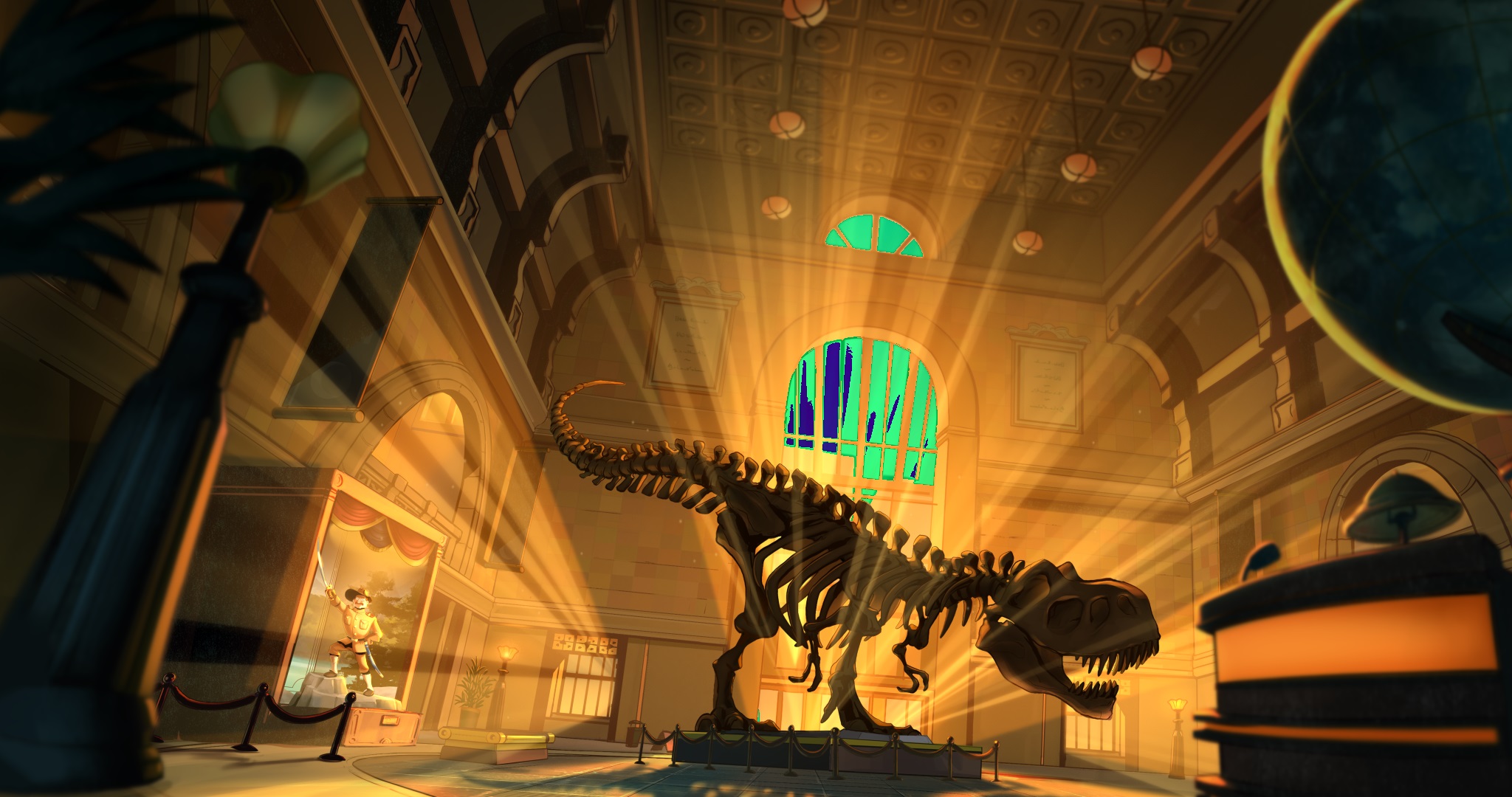
Fan-favourite wax figures from previous films return, including Teddy Roosevelt and Sacagawea, along with new additions such as Joan of Arc. As the series’ first foray into animation, the medium creates new opportunities to play up the action and comedy that audiences expect from the Night at the Museum films.
We had the chance to interview director Justin Lovell at Atomic Cartoons to discuss the film’s ambitious animated scenes, the production’s approach to sound and lighting in 2D animation as well as the challenges of expanding on a preexisting cinematic world.
What did a typical day in production look like for you?
Justin: A typical day in production involved lots of meetings and problem-solving because we were constantly trying to push bits and pieces. Being who I am, I found I was doing a lot of odd jobs as well. I came up through animation into this role. I would find myself jumping into shots and helping out the animation team or helping out the retakes team. So I would plug myself in where I was needed to help move the project along.
The day was just a lot of making sure the project stayed on track, whether it be problems from the technical side or facing creative stuff.
What did the creative brief for this project look like?
Justin: There were a lot of things that we wanted to do that were obviously going to keep it different from the original three [films], because they were live-action and we went with animation. We wanted to make it something that stood within the universe [of the first three films] but was also its own thing.
It was a little rough because you do have all these legacy ideas that we were locked into. How do we take those and push them? The creative brief was about rethinking the stories and pushing the boundaries of what we could do within that universe. We didn’t want to do a reboot. We wanted to make sure this was something that stood on its own feet.
We’re bringing the cast back, so we made sure that they were true to who they were and what they represented. And then we were able to bring in Joan of Arc, a brand new character. She’s quite layered, she’s very funny and she’d be the first into a fight.
How familiar was the crew with the Night at the Museum film series before starting production?
Justin: They were pretty familiar. A lot of the people I’d spoken to beforehand, if they hadn’t watched it, they were leaving those meetings to watch it straight away. You had to watch the first two films before you started. Our film sits between the second and third film, as McPhee hasn’t realized the tablet is magical.
A lot of the younger artists hadn’t seen the films. We made sure everyone was well-informed of who these characters were, what they stood for and their dynamics. And we had a lot of interest from people who were fans and in the industry. They were putting their hands up. It was cool to see the fans jump in and play around with the characters.
What techniques and programs did you use in animating this project?
Justin: Toon Boom. Lots of Toon Boom. All the Toon Boom. With our pre-vis, staging and our storyboards, we went with Storyboard Pro. For our builds, animation, effects, and comp, all that was Harmony. Everything was pretty much Toon Boom products, minus a five-to-seven per cent where we used Maya and After Effects. But a huge portion of this film was made directly with Toon Boom products.
The film starts with a long zoom through Manhattan to the museum. What were the challenges in executing such an involved shot?
Justin: The first challenge was getting everyone on board. For that shot, everyone was a little scared. I wanted something big to open the film, to put butts in seats. I knew that if we got [the opening] wrong, people would just turn off and be onto whatever’s next. For the planning, I sat down with one of our technical directors, Juan Carlos, and we went through the stages.
From the very top of the shot, as we go down into the buildings, into Times Square, and just as we pushed through the taxi right at the beginning, that was all Maya projections. And then from the cab, all the way through into the museum, and pretty much all the rest of the film was done in Harmony.

